Its pretty crazy to think that 10 days have already passed and we are about to reach Ushuaia again. As I only have a short time to upload this I’m going to keep it fairly short but hopefully I can make up for it with some cool pictures.
Antarctica is an incredibly beautiful place, with magnificent wildlife and I’m truly honoured to have had the chance to come down here. The crew on Oceanwide and the passengers were wonderful and I’ve learned more than I could have imagined about whales, penguins, seals albatrosses and various seabirds.
Of three most common penguins on the Antarctic Peninsula, gentoo penguins are the easygoing surfers of the group. They breed throughout the summer while chinstraps and adele penguins a restricted to breeding during certain time periods. This is thought to be a major contributor to their increased success on the Antarctic Peninsula.
All in all we had great weather, with a fairly calm crossing across the Drake Passage and even managed to get all the way down to the Polar Circle!!
Some formalities for going ashore in Antarctica. Vacuuming clothes and bags to ensure no alien species onto the continent.
So I’m almost finished my year and I think its been becoming plainer and plainer as the year has progressed that divers are a special breed.
This is no doubt amplified when it comes to polar divers. I mean what you have to be pretty crazy to do dig your dive kit out from under the snow!!
With the water temperature at -2°C, the most important part of polar diving is keeping warm. Divers need a dry suit, warm gloves, hood and some seriously toasty undergarments.
My record in my fabulous Arctic Fourth Element Undergarments and Waterproof dry suit was a stellar 35 min woohoo!!!
For most of us we know of Antarctica as the white continent but divers know that if you head underwater, Antarctica is full of colour.
On the rocky walls you can be treated to a diversity of sponges, tunicates, limpets, starfish, Antarctic isopods, benthic fish and polycheate worms.
Our trip was characterised by some absolutely fantastic predator-prey interactions. Leopard seals are apex predators in Antarctica and watching them hunt and eat penguins was one of the most fascinating and gruesome things I’ve had the opportunity to witness. From our zodiac we would watch the leopard seal position itself and wait for the penguins to make their dash to shore. Two meters from the leopard seal, the group would scatter and swim like crazy in all directions. Unfortunately for the penguins, they are no match for this supreme killing machine.
Leopard seals show their real magnificence and grace underwater. This is an animal that demands serious respect.
Killer whales hunting a Arnoux’s Beaked Whale.
At Port Charcot we did a dive next to an iceberg!! Most of us are aware that only 10% of icebergs are visible above water, leaving 90% of them ready to be explored by divers.
Icebergs are incredibly beautiful underwater, with the motion of the water creating shapes and textures similar to a golf ball. As the iceberg melts, trapped bubbles escape creating a haze of white mist and as you swim around the periphery a faint fizzing sound can be heard. Buoyancy can also be challenging when diving next to icebergs as the freshwater released by the melting iceberg and surrounding salt water can create almost vertical haloclines.
A streak of good weather allowed us to dive at Detaille Island, our stopping point below the polar circle. As the non-divers visited the historic base/museum on the island itself, the divers explored a sloping rocky wall just outside the bounds of the harbour. To my knowledge we were the first divers ever to investigate this island underwater.
On our second last day in Antarctica we visited Vernadsky Station, a Ukrainian scientific base where tourists can buy gifts, send postcards and even play a game of pool with the friendly Ukrainians.
We also visited the historic Wordie Hut which is an example of an early British Scientific Research Station. Built in the January 1947, it is apparent that the hut was not meant for Scottish Expedition Leaders. Poor Kelvin Murray appears to be stuck.
Thanks to all the staff and passengers at Oceanwide Expeditions for making this great trip and particular thanks to Kelvin Murray, Erin McFadden and Johan Petersson for everything they have done.

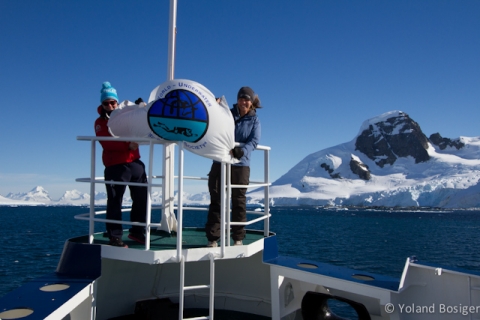
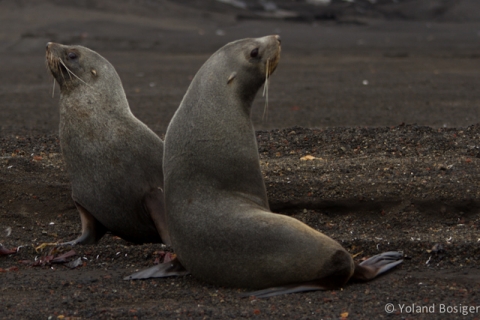
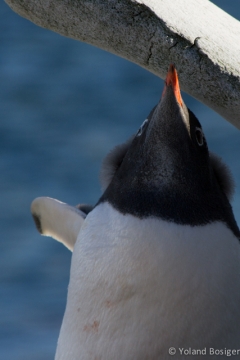



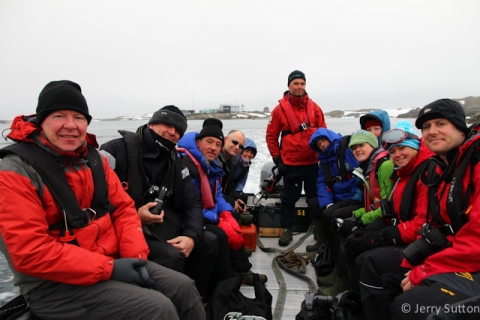
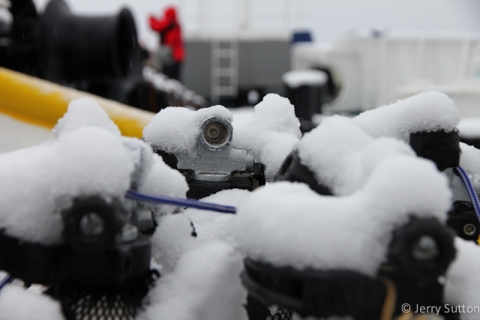
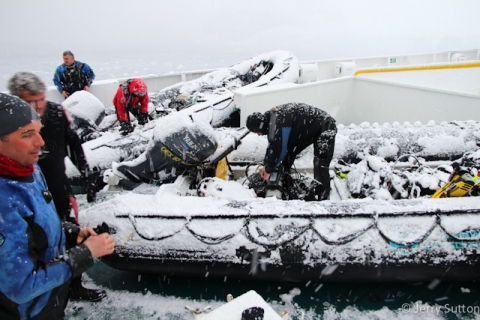
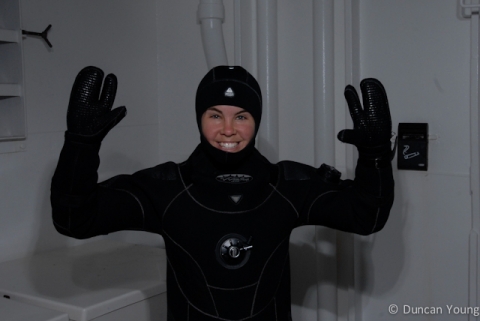

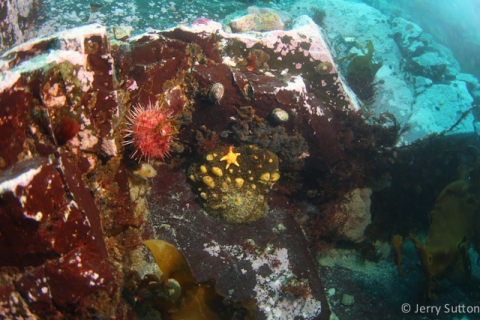
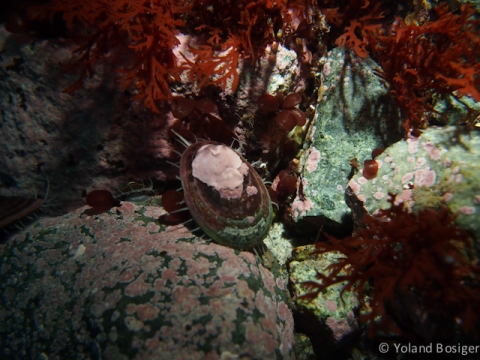
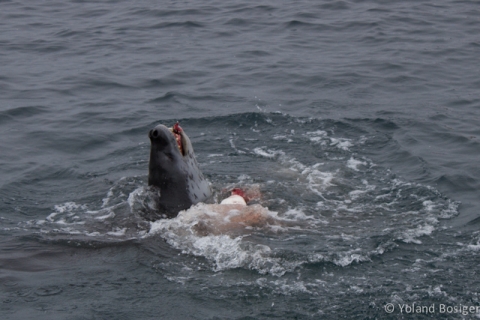
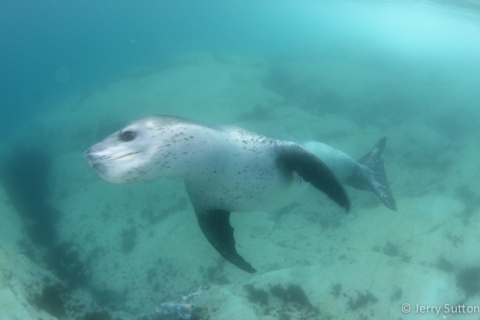

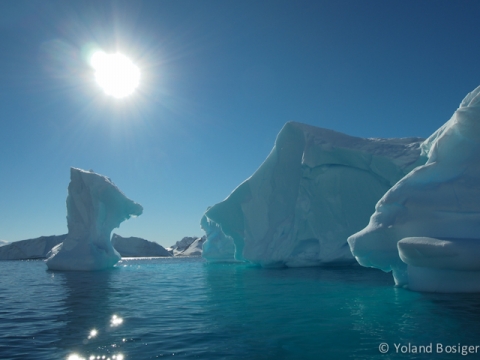
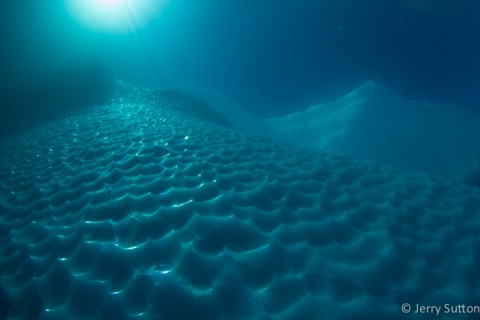
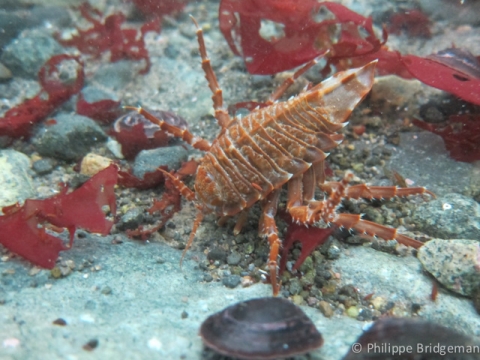
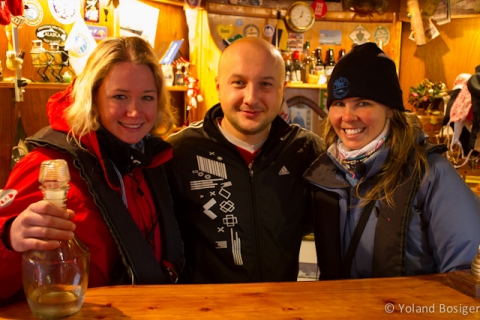
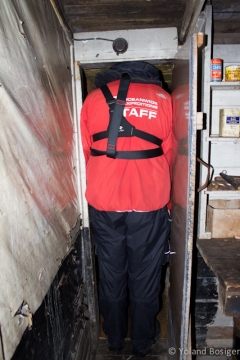
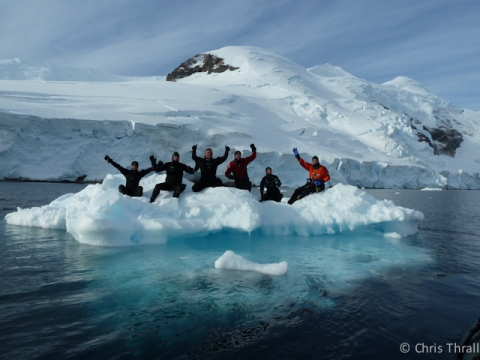
Great article, Yolly! And great diving with you in Antarctica! Here’s my humble account – I don’t think I’ll be getting sponsorship at any time soon! http://christhrall.com/blog/?p=410